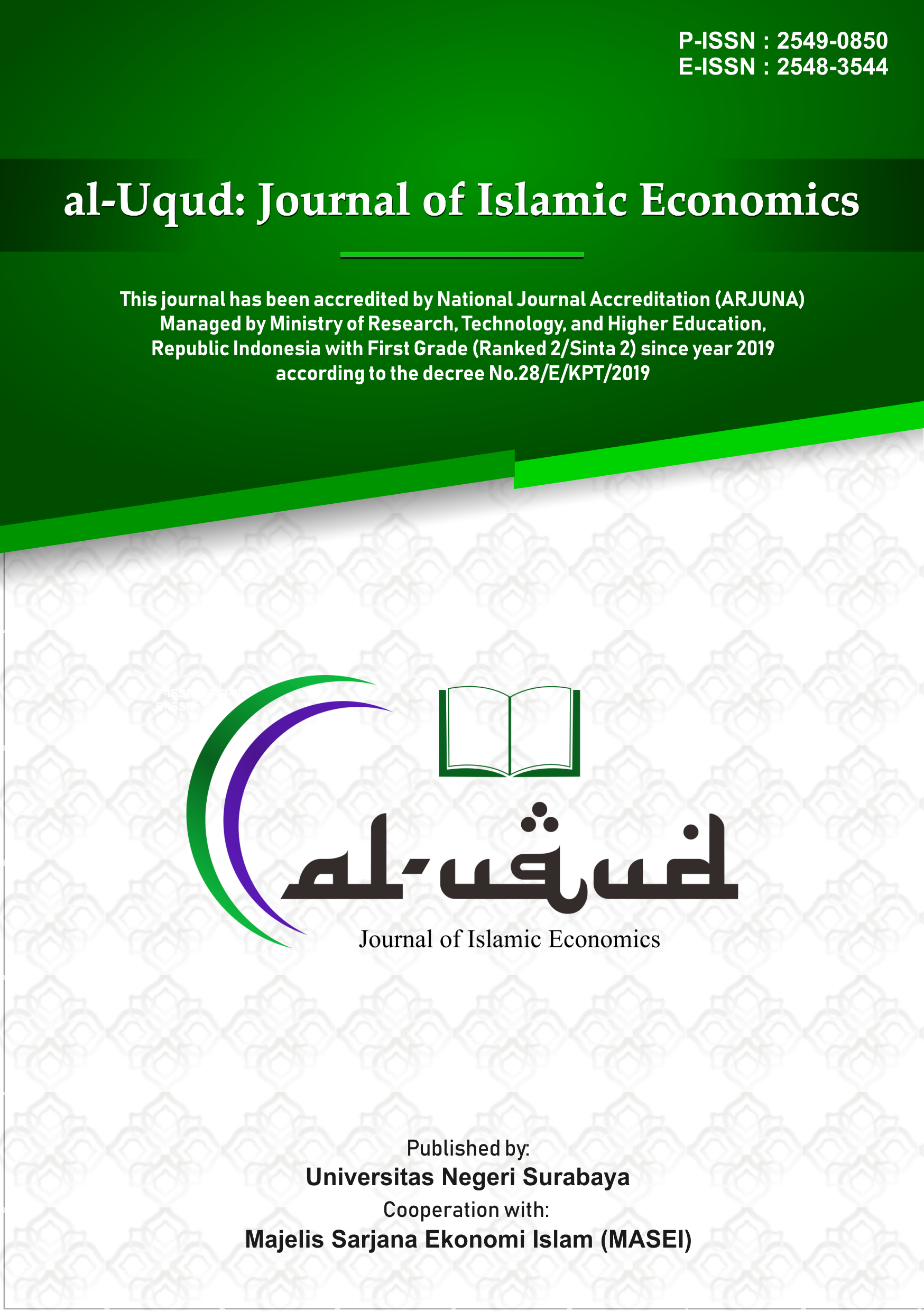COMPARISON AND PREDICTING FINANCIAL PERFORMANCE OF ISLAMIC AND CONVENTIONAL BANKS IN INDONESIA TO ACHIEVE GROWTH SUSTAINABILITY
DOI:
https://doi.org/10.26740/al-uqud.v3n2.p174-187Keywords:
Islamic Banking, Financial Performance, Artificial Neural NetworkAbstract
Islamic banking fall on stagnation of financial performance in 2011 after successfully overcoming the financial crisis in 1998 and 2008, as though the Islamic banking sector had only run in place and had no clear purpose in developing the Islamic finance business. The purpose of this study is to clarify the variables that predispose financial performance, as well as predict the decrease and increase of financial performance. This study uses an Artificial Neural Network (ANN) model to find out the variables that affect financial performance and predict the decrease and increase of financial performance of sharia and conventional banking for the next five months. This research generates the variables which affect the financial performance of sharia banking and the prediction of financial performance over the next five months. The variables which affect the level of financial performance of sharia banking affected dominantly by inflation, although the results of conventional banking are the same but not too significant. This shows that sharia banking CBGB (Commercial Bank Group of Business) 2 is very vulnerable with macroeconomic factors compared with conventional banking. ANN predictions produce an average of 80% success in predicting performance over the next five months.
References
Al-Osaimy, M.H, (1998), Neural Network System for Predicting Islamic Bank Performance, JKAU: Econ. & Adm., Vol. 11, pp. 33-46.
Anwar, S., & Ismal, R. (2011). Robustness analysis of artificial neural networks and support vector machine in making prediction. In Parallel and Distributed Processing with Applications (ISPA), 2011 IEEE 9th International Symposium on (pp. 256-261). IEEE.
Anwar, S., & Mikami, Y. (2011). Comparing accuracy performance of ANN, MLR, and GARCH model in predicting time deposit return of Islamic bank. International Journal of Trade, Economics and Finance, 2(1), 44.
Anwar, S., and Watanabe, K. (2011). Performance comparison of multiple linear regression and artificial neural networks in predicting depositor return of Islamic Bank. In 2010 International Conference on E-business, Management and Economics. IPEDR vol.3 (2011).
Athanasoglou, P., Brissimis, S., Delis, M., 2008. Bank-specific, industry-specific and macroeconomic determinants of bank profitability. Journal of International Financial Markets, Institutions and Money 18 (2), 121136.
Bishop, M., C. (1995), Neural networks for pattern recognition 1st ed, Oxford University Press Inc, New York.
Boyacioglu, M. A., Kara, Y., & Baykan, Ö. K. (2009). Predicting bank financial failures using neural networks, support vector machines and multivariate statistical methods: A comparative analysis in the sample of savings deposit insurance fund (SDIF) transferred banks in Turkey. Elsevier, Volume 36, Issue 2, Part 2, March 2009, Pages 3355-3366.
Brissimis, S.N., Delis, M.D., Papanikolaou, N.I., 2008. Exploring the nexus between banking sector reform and performance: evidence from newly acceded EU countries. Journal of Banking and Finance 32 (12), 26742683.
Chantapong, S. (2005). Comparative study of domestic and foreign bank performance in Thailand: The regression analysis. Economic Change and Restructuring, 38(1), 63-83.
Fletcher, D., & Goss, E. (1993). Forecasting with neural networks: an application using bankruptcy data. Elsevier, Information & Management, Volume 24, Issue 3, March 1993, Pages 159-167.
GarcÃa-Herrero, A., Gavilá, S., Santabárbara, D., 2009. What explains the low profitability of Chinese banks? Journal of Banking and Finance 33 (11), 20802092.
Husna, H. N., & Rahman, R. A. (2012). Financial Distress-Detection Model for Islamic Banks. International Journal of Trade, Economics and Finance, 3(3), 158.
Islamic Banking Statistik (IBS). (2017). Islamic Banking Performance. www.ojk.go.id.
Liza Angelina, S. E., & Msi, A. (2005). Comparison of Early Warning Systems (EWS) To Predict Bankruptcy of Commercial Banks In Indonesia. Bulletin of Monetary Economics and Banking), 7(3), 461-484.
Kumbirai, M., Webb, R. (2010), A financial ratio analysis of commercial bank performance in South Africa. African Review of Economics and Finance, 2(1), 30-53.
Khrawish, H. A. (2011). Determinants of commercial banks performance: evidence from Jordan. International Research Journal of Finance and Economics, 81, 148-159.
Murthy, Y., Sree, R. (2003) A Study on Financial Ratios of major Commercial Banks . Research Studies, College of Banking & Financial Studies, Sultanate of Oman.
Odom, Marcus D., and Ramesh Sharda (1990). A neural network model for bankruptcy prediction. Neural Networks, 1990, 1990 IJCNN International Joint Conference on. IEEE.
Olweny, T., Shipho, T.M. (2011) Effects of Banking Sectoral Factors on the Profitability of Commercial Banks in Kenya. Economics and Finance Review, 1(5), 1-30.
Ongore, V.O., Kusa, G.B. (2013), Determinants of financial performance of commercial banks in Kenya. International Journal of Economics and Financial Issues, 3(1), 237-252.
Salchenberger, L. M., Cinar, E., & Lash, N. A. (1992). Neural networks: A new tool for predicting thrift failures. Journal of the Decision Science Institute, vol. 23(4), 899-916.
Tam, KY, (1991), Neural network models and the prediction of bank bankruptcy, Elsevier, Volume 19, Issue 5, Pages 429-445.
Thomson, J. B. (1991). Predicting bank failures in the 1980s. Economic Review-Federal Reserve Bank of Cleveland, 27(1), 9.
Staikouras, C., Wood, G., 2004. The determinants of European bank profitability. International Business and Economics Research Journal 3 (6), 5768.
www.bi.go.id. (2017). Indonesia Macro Economic.
Downloads
Published
How to Cite
Issue
Section
License
CC BY 4.0 Abstract views: 1465
,
Abstract views: 1465
, PDF Downloads: 1019
PDF Downloads: 1019








